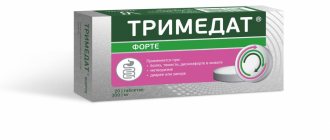Compatibility of Bromhexine and alcohol
? Bromhexine is a mucolytic drug that thins mucus. They drink it in the form of syrups or solutions. If at this time the patient drinks alcohol in any dose, dyspeptic disorder will occur. That is, nausea, vomiting, diarrhea, and increased flatulence in the intestines will appear.
If you use only medicine, dizziness and headaches rarely occur. But if alcoholic beverages are additionally used, the frequency of manifestation increases. A migraine may begin.
The drug is eliminated through the liver. If the patient uses it for a long time, liver enzymes may increase. When taken simultaneously with alcohol, a person’s condition can worsen to the point of developing hepatitis.
Alcohol has an active effect on the kidneys, increasing their function. The body needs this action to quickly eliminate toxic ethanol. But due to this function, the drug is eliminated at the same time. Therefore, the therapeutic effect is reduced or completely absent.
What is it used for?
The drug is an expectorant and is prescribed for the treatment of cough in children and adults. Efficiency is due to the ability of the components included in the tablets or syrup to dilute mucus and promote its removal.
Bromhexine stimulates the secretory cells of the bronchial mucosa, where sputum is produced.
Indications:
- bronchial asthma;
- tracheobronchitis;
- Chronical bronchitis;
- pneumonia.
All diseases are characterized by the formation of thick, difficult-to-dispose secretions.
Brief characteristics of the drug
This is a solution or syrup intended for oral administration.
The active substance is bromhexine hydrochloride, due to which the following pharmacological action is formed:
- thinning of sputum;
- expectorant effect;
- stimulation of surfactant formation.
The drug is quickly absorbed from the gastrointestinal tract, but has low bioavailability. The drug is metabolized to the formation of ambroxol. The drug does not penetrate the blood-brain barrier and therefore has no effect on the brain. But in small quantities they cross the placental barrier, the effect is insignificant.
The medicine is indicated for use in any diseases of the respiratory tract, accompanied by the formation of viscous, thick sputum. This could be bronchial asthma, bronchitis, pneumonia, cystic fibrosis.
Side effects:
- dyspepsia;
- increased liver enzymes in the blood;
- dizziness, headache;
- allergic skin reactions, increased sweating;
- bronchospasm, cough.
The advantage of the product is the small number of contraindications. It is not recommended for use in case of individual intolerance. Use during pregnancy and lactation is possible only if the effect outweighs the risk of side effects.
The instructions for use indicate that if the patient has a stomach ulcer, reduce the dosage and use the drug under the supervision of a doctor.
The medicine is not used with codeine-based cough medicines. This makes it difficult to remove mucus, which leads to the formation of bronchospasm.
https://myweak.ru/alkogolizm/lekarstva/bromgeksin-sovmestimost.html
Indications for use
Acute and chronic diseases of the respiratory tract, accompanied by the formation of difficult-to-discharge viscous secretions:
- pneumonia,
- tracheobronchitis,
- obstructive bronchitis,
- bronchial asthma,
- cystic fibrosis,
- emphysema,
- pneumoconiosis,
- pulmonary tuberculosis.
Sanitation of the bronchial tree in the preoperative period and during therapeutic and diagnostic intrabronchial manipulations, prevention of accumulation of thick viscous sputum in the bronchi after surgery.
Use of the drug for alcoholism
Alcoholism is the state of alcohol dependence, leading to the formation of inflammatory diseases of the abdominal organs. Gastritis and colitis occur, which then turn into ulcers. The greater impact falls on the liver tissue.
Hepatocytes are destroyed and an inflammatory reaction occurs. Both conditions are not contraindications for taking the medicine, but against the background of addiction, its use is not recommended.
If prolonged use of the drug can cause an increase in liver enzymes, then alcoholism forms hepatitis. Due to the increased impact on the organ, the stage of fibrosis occurs faster.
Consequences of drinking alcohol
If a person drinks alcohol once during treatment with a mucolytic, no serious adverse reactions will occur.
But if you use the medicine throughout the entire therapy, the following consequences occur:
- nausea, vomiting, due to which all the medicine taken is evacuated from the digestive tract, so there is no therapeutic effect;
- allergic skin reactions, manifested in the form of a rash, but they disappear after stopping the use of both substances;
- high risk of spasm in the bronchi due to the accumulation of exudate, which can lead to a severe attack of suffocation and increased coughing;
- alcohol leads to increased kidney function, so fluid is removed from the body faster, dehydration occurs, which thickens the sputum even more;
- with constant violation of the rule, gastritis is formed, which transforms into a stomach or duodenal ulcer;
- if the patient had inflammation of the gastrointestinal mucosa at the time of treatment, the risk of bleeding increases.
To clarify the possibility of consequences, consult a therapist about the joint use of substances.
special instructions
During treatment, it is recommended to consume a sufficient amount of fluid, which supports the secretolytic effect of bromhexine.
In cases of impaired bronchial motility or with a significant volume of sputum secretion, the use of bromhexine requires caution due to the risk of retention of secretions in the respiratory tract.
In children, treatment should be combined with postural drainage or vibration massage of the chest, which facilitates the removal of secretions from the bronchi.
Bromhexine and beer
Doctors do not advise mixing the mucolytic drug Bromhexine even with such a weak alcoholic drink as beer. In most cases, the body reacts negatively to such a symbiosis, causing nausea, vomiting, indigestion and constipation.
The drug is metabolized through the liver, just like beer, so the toxic load on the liver increases. If you constantly mix the medicine with an alcoholic drink, the condition of the filter organ will worsen, and there is a risk of developing cirrhosis and hepatitis.
The kidneys remove the drug and alcohol, but alcohol is always a priority. The paired organ, in order to quickly cleanse the body, can remove the active substance before processing it.
How to use
Depending on the age and weight of the patient, the drug is prescribed based on the number of milligrams per kilogram of weight.
Children under 2 years of age are not recommended to use Bromhexine; syrup is used in pediatrics for ages 2 to 6 years, tablets for children over 6 years of age and adults.
Adults are prescribed 1-2 tablets (8-16 mg), 3-4 times a day.
At the age of 6 to 14 years, the daily dose of 8 mg of the drug is divided into 3 doses.
The active substance content in the syrup is 4 mg per 5 ml of syrup. Appointed
depending on the age and weight of the child from 2 to 8 mg:
- from 2 to 6 years 2.5-5 ml of syrup, i.e. 2-4 mg 3 times a day;
- at the age of 6-10 years it is necessary to take 5-10 ml of syrup (4-8 mg) three times a day;
- over 10 years old, 10 ml every 6-8 hours.
When choosing a dosage, it is necessary not only to focus on the child’s age, but also on his physical condition. If a 2-year-old child is ahead of his peers in height and weight, you can safely increase the dosage, since the dosage indicated in the instructions will be ineffective. The same applies if the child is smaller than his peers. In this case, you need to slightly reduce the amount of ml of medicine.
Organs affected by the toxin
The combined use of pharmacological agents and alcohol has a toxic effect on the internal organs and environments of the body. Alcohol, entering into a chemical reaction with a medicine, leads to poisoning, disrupts physiological processes, enhances or weakens the healing properties of drugs.
The liver suffers more than other organs. She gets hit twice. Many medications have a side effect - hepatotoxicity, destroy cells, and disrupt the physiology of the organ. In the liver, alcohol breaks down to ethanal, a substance 20-30 times more toxic than ethanol, which causes the death of hepatocytes.
Dangerous groups of drugs for the organ in combination with alcohol:
- anti-inflammatory;
- hormonal;
- antibacterial;
- antifungal;
- glucose control agents for diabetes mellitus;
- anti-tuberculosis;
- cytostatics (chemotherapy drugs);
- tranquilizers (anti-epileptic, psychotropic).
In second place among the internal organs exposed to the harmful effects of alcohol together with medications are the heart and vascular system. Strong drinks during drug therapy constrict blood vessels and increase blood pressure. The simultaneous intake of alcohol and chemical substances leads to failure of the myocardium and increases the risk of developing an attack of angina pectoris and a heart attack.
A mixture of ethanol and pharmaceuticals disrupts the quality of the blood and reduces clotting. This is dangerous due to internal bleeding and strokes.
When to take with caution
The drug should be prescribed by the attending physician, taking into account the characteristics of the patient. These include:
- liver or kidney diseases, gastrointestinal tract;
- diabetes mellitus type 1 or 2;
- periodic internal bleeding in the intestines or stomach;
- diseases of the respiratory system with the accumulation of large amounts of sputum
The use of the drug in the second and third trimester of pregnancy should be under the supervision of the attending physician. If there is a need to use the medicine during breastfeeding, it is necessary to weigh the benefits and possible risks. The components in the product can pass into breast milk and enter the baby’s body with it.
Rules for taking medications and alcohol
Drinking alcohol during treatment minimizes the clinical effect of therapy and creates a risk of developing complications of the disease.
If this cannot be avoided, follow the rules of behavior that will reduce the occurrence of negative consequences:
- Do not drink strong drinks (vodka, cognac, whiskey), choose dry wine (100-150 ml), beer (no more than 300 ml). Don't drink alcohol on an empty stomach.
- The interval between taking the medicine and alcohol should be at least 2 hours.
- To reduce the toxic effect, take medications that protect the liver (hepatoprotectors), pancreas (pancreatin), and stomach (antacids ─ Rennie, Almagel).
If a person takes antiviral medications for colds, anti-inflammatory drugs, alcohol in moderation does not pose a threat to the body.
Alcoholic drinks during treatment are strictly contraindicated in cases of liver cirrhosis, severe infectious diseases, and during a course of chemotherapy.
Contraindications
The use of the drug in the following situations is strictly prohibited:
- Lactation period in women.
- The period of exacerbation of peptic ulcer of the gastrointestinal tract.
- First trimester of pregnancy.
- Children's age: up to 2 years for syrup and 6 years for tablets.
- Intolerance to the components of the drug.
- Hypersensitivity to sugars.
When consulting with a doctor, be sure to notify about the presence of illnesses or pregnancy. This way the doctor can prescribe safe and effective treatment.
Medicines, alcohol and chronic diseases
If a person has chronic diseases, simultaneous use of alcohol and medications is potentially dangerous for the functioning of vital organs. Since patients systematically take prescribed medications, the influence of alcohol can lead to negative consequences.
People with chronic heart disease (angina pectoris, heart defects) develop arrhythmias of varying severity. Heart attacks with severe pain syndrome develop, which is not relieved by Nitroglycerin, and the risk of developing myocardial infarction increases significantly.
In case of chronic liver diseases (viral hepatitis, hepatosis), alcohol during treatment can become a trigger in the development of cirrhosis and hepatocellular carcinoma (cancer).
Drinking alcohol during cirrhosis leads to the following consequences:
- bleeding into the abdominal cavity;
- liver decomposition, infection, peritonitis;
- hepatic coma;
- death.
If a person is on long-term treatment with sedatives, psychotropic drugs, tranquilizers, he is contraindicated in drinking alcohol. This leads to severe depression and the appearance of obsessive states (hallucinations, phobias). Suicidal feelings develop. Such a patient needs constant monitoring and assistance from a psychiatrist.
Pharmacokinetics
When taken orally, bromhexine is almost completely (99%) absorbed within 30 minutes. Bioavailability is 80% due to the “first pass” effect through the liver. In plasma, bromhexine binds to proteins and penetrates the blood-brain and placental barriers. In the liver, bromhexine undergoes demethylation and oxidation. The half-life is 15 hours due to slow reverse diffusion from tissues. Excreted by the kidneys. In chronic renal failure, the release of bromhexine metabolites is impaired. With repeated use, bromhexine may accumulate.
The most dangerous combinations and consequences
The combination of alcohol and chemical-based drugs can lead to serious disorders in the body, and in some cases to fatal consequences.
List of medications and their side effects in combination with alcohol:
| Name of group, drug | Negative results of interaction |
| Neuroleptics (tranquilizers, anticonvulsants, hypnotics) | Severe intoxication, up to cerebral coma |
| CNS stimulants (Theophedrine, Ephedrine, Caffeine) | Rapid increase in blood pressure, hypertensive crisis |
| Antihypertensives (Captofrin, Enalapril, Enap-N), diuretics (Indapamide, Furosemide) | Sudden drop in pressure, collapse |
| Analgesics, anti-inflammatory | Increased toxic substances in the blood, general poisoning of the body |
| Acetylsalicylic acid (Aspirin) | Acute gastritis, perforation of gastric ulcer and 12-PC |
| Paracetamol | Toxic liver damage |
| Hypoglycemic (Glibenclamide, Glipizide, Metformin, Phenformin), insulin | A sharp decrease in blood sugar levels, hypoglycemic coma |




